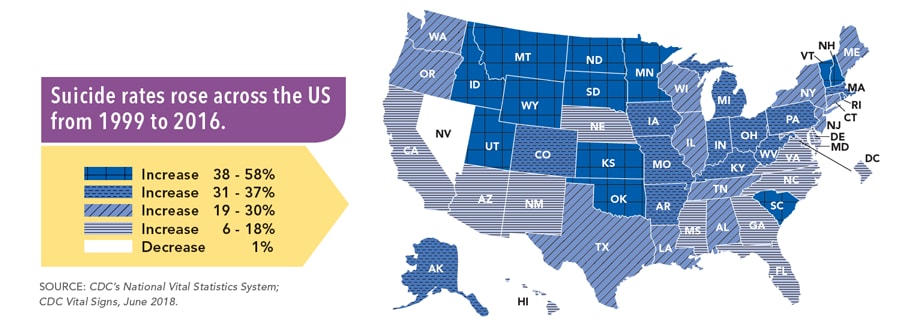For individuals living with mental health challenges, societal barriers contribute to the vicious cycle of stigma. Stigma turned inward (self-stigma) in turn, elevates levels of self-hate, and resistance to social interactions. For people who deal with the internal struggle of mental health issues daily, these barriers further contribute to isolation, increasing the level of risk and relapse in their lives.
Although medication is often prioritized as the primary treatment option for mental illness, the continual increase in the number of deaths by suicide indicates that medication and psychotherapy are not enough.

Traditional treatment models consist of a linear approach that focuses on the issue to occur from solely within the mind of the individual. Through this lens, the “issue” is simplified and given an equally simple solution: the patient is sick so give him medicine and it’ll go away.
Although medication is often necessary as a crucial part of treatment, traditional mental health models that center around medication are missing important components that could create longer-lasting effects of recovery.
What would mental health look like in our society if we approached these individuals through an inclusive, supportive lens?
In contrast to our usual “medicate or push symptomatic individuals into hospitals or prisons” mentality, we could provide support and alternative treatment options through community building and assimilation.

Stigmatizing and socially excluding populations struggling with mental illness dehumanizes them more; by limiting their potential for life satisfaction, happiness through human contact, and a sense of purpose. However, through multidisciplinary approaches that combine traditional and alternative models, mental health is approached in an alternative way that takes into consideration how mental illness isolates individuals and uses this lens to prioritizes meaningful human connection and community involvement as an essential factor in recovery.
Geel: A Community of Alternative Treatment
Success through alternative treatment methods in other societies exemplify that mental illness can and should be treated outside of the traditional routes; it should be treated through community inclusion and holistic treatments.
For example, in a small Belgium town named Geel, there is a government funded program that supports a community of people who live supporting those “living with mental distress (Geel)”.
The community is extremely accepting and tolerant of the needs of those living with mental illness. “Over 20 percent have a diagnosis of schizophrenia and other conditions such as learning disabilities and autism (Geel)”. The town has found alternative ways in supporting individuals suffering from mental illness, whom they call “boarders,” to cope with their symptoms by including them as regular citizens and treating them “without fear and without emotion (Geel)”.

They do not prescribe medication to their residents. Instead, they have adjusted their surroundings to fit the individual’s needs. The focus of this community is to construct an environment where the boarders are accepted and treated with dignity.
Despite the general perception that individuals living with schizophrenia or other mental illnesses are unpredictable and violent, violent incident rates in Geel are fairly low. Through an inclusive holistic model such as the one that exists in Geel, there is potential to impact perceptions on the stigma surrounding mental illness, and as well as tackle the issue of isolation for these individuals through community integration.

A neighborhood in Geel Belgium community
In Geel, residents are treated with compassion and their environments are adjusted to cater to their individual needs. This model contrasts from the traditional medicine and psychotherapy approach that dominates the United States. It has resulted in the longer-lasting recovery and positive life changes.
In present society, individuals living with mental illness are sent a message that there is something wrong with them and that they need to “fix themselves” in order to assimilate or to be accepted by the general population.
These barriers contribute to the mental prisons that they are trapped in, as individuals attempt to live with their illnesses and live up to societal expectations. There is a high expectation for these individuals to change aspects that are out of their control to fit the comfort of others or be at the risk of being pushed out, marginalized, ostracized, (or essentially) discriminated against, but what if their surroundings changed to support them instead?
Inclusiveness Can Happen Here Too
Although cultural barriers may prevent us from modeling completely after Geel, their approach corresponds with the new school of thought that community inclusion may be a more successful method. Geel residents are fully assimilated into the community and symptoms are managed through an accepting and holistic approach.
There is a chance for our society to shift the negative perceptions of mental illness through working on changing the environment by creating safe spaces and communities that mental health populations can feel comfortable being a part of.
 In the United States, although very limited, inclusive communities do exist. For individuals who suffer from social isolation, these communities provide connection and purpose by providing employment, community projects and a safe place where individuals can practice their passions. These communities are centered around organizations which provides a safe space, also welcoming open dialogue surrounding stigmatized topics such as mental illness.
In the United States, although very limited, inclusive communities do exist. For individuals who suffer from social isolation, these communities provide connection and purpose by providing employment, community projects and a safe place where individuals can practice their passions. These communities are centered around organizations which provides a safe space, also welcoming open dialogue surrounding stigmatized topics such as mental illness.
Edited by Kevin Naruse
Author Kachel Rang is a graduate student at UCLA’s Masters in Social Work program and intern at Painted Brain.
References:
- https://www.npr.org/sections/health-shots/2018/05/01/606588504/americans-are-a-lonely-lot-and-young-people-bear-the-heaviest-burden
- https://www.npr.org/sections/health-shots/2016/07/01/484083305/for-centuries-a-small-town-has-embraced-strangers-with-mental-illness
- https://www.madinamerica.com/2016/04/suicide-rates-rise-with-increased-antidepressant-use/
- Why Self-Stigma is the Most Dangerous Pitfall when Battling Mental Illness

